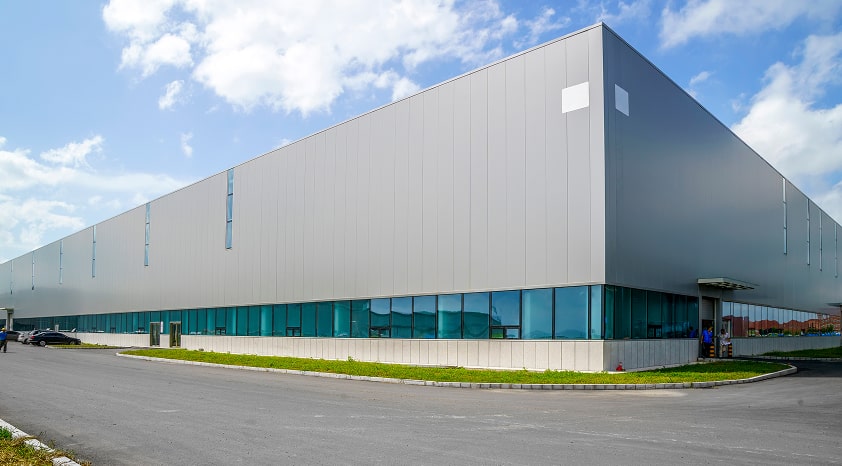The COVID-19 pandemic has brought about significant challenges to the way many workplaces operate. These challenges have required organizations to be flexible and adaptable in order to continue operating effectively. Employers have had to implement new policies and procedures, such as remote work options, mental health support programs, and compliance with health regulations.
Offices in 2023 may face a variety of challenges from a workplace point of view. Some potential ones include:

- Managing remote and in-person teams: With many companies continuing to adopt hybrid work models, managers may need to navigate the challenges of leading teams that are split between working remotely and in the office.
- Maintaining employee engagement and productivity: With remote work, it may be harder to keep employees engaged and productive. Managers may need to find new ways to keep their teams motivated and on task.
- Ensuring compliance with health and safety guidelines: With the ongoing pandemic, offices may need to continue to implement measures to ensure the health and safety of employees, such as social distancing and mask-wearing.
- Adapting to changing technology: As technology continues to evolve, offices may need to invest in new tools and systems to stay competitive and efficient.
- Managing the return to the office: As offices begin to reopen, managers may need to plan for the return of employees, including providing adequate space and resources for social distancing and addressing the concerns of employees who may be hesitant to return to the office.
- Managing the cost of office space: With many companies now offering remote work options, there may be less demand for office space. This could lead to an oversupply of office space and result in lower rents and prices, and some offices may need to downsize or close.
However, the debate over whether or not to return to the office remains to be the most talked about issue till now.
Who, Why & How of the ‘Return to Office’ debate
Team: Work from Home
Who?
- Parents: Parents with young children may find it challenging to balance work and child-care responsibilities, and may prefer to work from home in order to have more flexibility and control over their schedules.
- Caregivers: People who are responsible for caring for family members or loved ones may prefer to work from home in order to be able to provide care while also working.
- Women: Some studies have suggested that women may be more likely to prefer working from home than men, as it can allow them to better balance their work and personal responsibilities.
- Older workers: Older workers may prefer to work from home in order to avoid the physical demands of commuting or to reduce the risk of exposure to COVID-19.
- People with disabilities: People with disabilities may prefer to work from home as it can provide them with more accessibility and accommodations than a traditional office setting.
- Individuals who live in rural areas or have long commutes: Remote work can help employees to save money on transportation, and it also can be beneficial for people living in rural areas or who have long commutes.
Why?
- Flexibility: Working from home can provide employees with more flexibility in terms of their work schedule. This can help employees better balance their work and personal responsibilities.
- Productivity: Some employees may find that they are more productive when working from home, as they have fewer distractions and can create a work environment that is more conducive to their needs.
- Commuting: Working from home can save employees time and money on commuting, which can be a significant benefit.
- Cost savings: Remote work can help employees to save money on transportation, office attire, and other expenses.
- Work-Life Balance: Remote work can help employees to achieve a better balance between their work and personal life.
- Environment: Some employees may want to work from home to reduce their carbon footprint by avoiding daily commuting and reducing the impact on the environment.
- Safety: Some employees may want to work from home to avoid the risk of exposure to COVID-19 or other illnesses.
Team: Return to Office
Who?
- Younger workers: Younger workers may be more likely to prefer working in an office setting as they may value the socialization and networking opportunities that an office environment provides.
- Men: Some studies have suggested that men may be more likely to prefer working in an office than women, as they may value the social and professional opportunities that an office environment provides.
- Professionals in certain fields: Certain fields such as Sales, Customer Service, and other roles that involve face-to-face interaction, may be more likely to prefer working in an office setting.
- People who live in urban areas: People who live in urban areas may be more likely to want to return to the office because of the convenience and proximity to amenities.
- People who are extroverted: People who are extroverted may be more likely to prefer working in an office setting, as they may value the social and professional opportunities that an office environment provides.
- People who prefer structure and routine: People who prefer structure and routine may be more likely to want to return to the office as working from home can be less predictable, and the office can provide a more stable environment
Why?
- Collaboration and Communication: Some employees may find that they are more productive and effective when working in an office setting, as it allows for more face-to-face interactions and collaboration among team members.
- Professional Development: Being in the office can provide employees with more opportunities to learn from their colleagues, take on new responsibilities and build their professional networks.
- Company Culture: Being in the office can help employees to feel more connected to their organization’s culture and mission.
- Socialization: Some employees may miss the socialization and camaraderie that comes with working in an office setting, and may want to return to the office to reconnect with their colleagues.
- Technology: Some employees may find that they lack the necessary technology or internet connectivity to work effectively from home.
- Office Amenities: Some employees may prefer to work in an office setting because it offers amenities like a coffee shop, gym, or other facilities that are not available in a home setting.
- Job Requirements: Some jobs may require employees to be physically present in the office, such as jobs that involve hands-on work or the use of specialized equipment.

It’s important to note that these are generalizations, and that people’s preferences for working from the office may change depending on their individual circumstances and personal priorities. Employers have a tall task to consider the needs and preferences of each individual employee, and not only make decisions that support the well-being of all employees but also to safe-guard the best interest of the organization as a whole.
Hybrid Workplaces: The answer to mixed expectations?
Many organizations are considering a hybrid work model, where employees split their time between working from the office and working from home, as a solution to the debate over whether to return to the office post-pandemic.
A hybrid work model can provide employees with the best of both worlds, allowing them to take advantage of the benefits of working from home while also maintaining in-person interactions with their colleagues. This can help to improve communication and collaboration among team members, increase productivity, and boost employee morale.
However, it’s important to keep in mind that a hybrid work model is not a one-size-fits-all solution, and organizations will need to consider their specific needs and circumstances when implementing such a model. Employers should involve employees in the decision-making process to ensure that the best possible solution is found that meets the needs of both the organization and its employees.
What are the Hybrid Work Models that you can choose from?
Rotational- This model involves rotating employees between working in the office and working remotely on a set schedule. This allows employees to take advantage of the benefits of both environments while also ensuring that there is always a critical mass of people in the office.
Best suited for- This model may work well for organizations with a large number of employees and a need for face-to-face collaboration and in-person meetings. This model can help ensure that there is always a critical mass of people in the office.
Permanent- This model allows employees to choose whether they want to work remotely or in the office permanently. This can be beneficial for employees who have specific personal or professional needs that are better met by working remotely.
Best suited for- This model may work well for organizations with a high proportion of roles that can be done remotely, and where employees have specific personal or professional needs that are better met by working remotely
Hybrid- This model is a combination of the rotational and permanent models, in which some employees are permanently remote, and others are permanently in the office, while others may rotate between the two.
Best suited for- This model may work well for organizations with a mix of roles that can be done remotely and roles that require in-person presence. This model can provide employees with more flexibility to work in the environment that suits them best
Flexible- This model allows employees to decide when and where they want to work as long as they meet their job requirements. This can be beneficial for employees who have varying personal or professional obligations.
Best suited for- This model may work well for organizations with a high proportion of roles that can be done remotely, or where employees have varying personal or professional obligations, such as parents with child care responsibilities.
Hybrid-Flex- This model is a combination of the hybrid and flexible models, in which some employees are permanently remote or in the office, while others may rotate or work flexibly.
Best suited for- This model may work well for organizations that are willing to be more flexible and have a mix of employees with different needs and preferences.
It’s worth noting that, regardless of the model chosen, it’s important to have clear communication, trust and flexibility in place to ensure the success of the model. Additionally, it’s important to regularly review the model to see if it’s working as expected and make adjustments as necessary.
Who leads the hybrid transition & what does hybrid office management entail?
HR and IT are both crucial for a modern post-pandemic office.
HR is responsible for managing the human resources of an organization. They can play a key role in shaping the office culture and ensuring that employees feel supported and engaged, regardless of their office schedule.
IT, on the other hand, is responsible for maintaining the tech. the infrastructure of an organization. They can ensure that employees have access to the right tools. They also play an important role in data security, compliance and providing technical support.
Together, HR and IT can work to create a hybrid office environment that is responsive to the needs of employees while also ensuring that the organization’s goals are met. They can collaborate to develop policies and procedures that support remote work and flexible schedules while also ensuring that employees have access to the technology and resources they need to be productive.
There are several activities that HR and IT can collaborate on to create a successful hybrid office environment:
- Technology infrastructure: IT can work with HR to ensure that employees have access to the technology and resources they need to work effectively and securely, whether they are working remotely or in the office.
- Remote work policies: HR and IT can work together to develop policies and procedures that support remote work and flexible schedules while also ensuring that employees have access to the technology and resources they need to be productive.
- Security: HR and IT can collaborate to ensure that the organization’s data and systems are secure by implementing security measures such as data encryption, two-factor authentication, and remote access solutions.
- Compliance: HR and IT can work together to ensure that the organization is compliant with all relevant regulations and laws, such as the General Data Protection Regulation (GDPR) and the Health Insurance Portability and Accountability Act (HIPAA).
- Employee training: HR and IT can work together to provide employees with training on the technology and tools they need to work effectively and securely, both in-person and remotely.
- Employee support: HR and IT can collaborate to provide employees with the support they need to be successful, such as providing access to virtual mental health resources and promoting remote work policies that improve employee wellbeing.
- Technical Support: IT team can provide technical support to employees who are working remotely, ensuring they can access the systems they need to complete their work.
Enter Admin & Facility Teams
Admin and facility teams also play an important role in creating a successful hybrid office environment. They can enter the scene in several ways:
- Office management: Admin and facility teams are responsible for managing the day-to-day operations of the office, including booking conference rooms, monitoring office occupancy, and tracking equipment usage. They can work with HR and IT to ensure that the office is equipped to support a hybrid work environment.
- Space planning: Admin and facility teams can work with HR and IT to develop an office layout that supports a hybrid work environment, such as creating dedicated spaces for remote employees to work when they are in the office.
- Safety and sanitation: Admin and facility teams are responsible for ensuring that the office is safe and clean, and can work to implement COVID-19 safety protocols, such as providing hand sanitizer and enforcing social distancing guidelines.
- Maintenance: Facility teams can ensure that the office is well-maintained and that all equipment is in good working order. They can also work with IT to ensure that the office’s technology infrastructure is properly maintained.
- Supply chain manageme nt: Admin and facility teams can work with HR, IT, and other departments to ensure that the organization has the resources it needs to operate effectively, such as ordering office supplies and managing inventory.
- Event planning: They can coordinate events and meetings, both in person and virtual, working with the HR and IT team to ensure that the events are executed smoothly and technology is in place for video conferencing, recording and streaming.
Internal communication tactics for effective adoption of hybrid strategy
Hybrid is a big shift. Add the task of adopting new technology and process while maintaining productivity levels and it could become tricky. It requires clear communication of the benefits and goals of the new technology or process, as well as proper training and support for employees to effectively utilize it. Additionally, involving employees in the implementation process and gathering their feedback can increase buy-in and adoption. It’s also important to address any concerns or resistance to change and to continuously monitor and evaluate the effectiveness of the new technology or process in order to make any necessary adjustments.
- Clearly communicate the benefits and goals of the hybrid strategy: Employees are more likely to adopt a new hybrid strategy if they understand how it will benefit them and the organization. This could include improved work-life balance, increased productivity, and cost savings.
- Provide proper training and support: Employees will be more likely to adopt a new hybrid strategy if they feel confident and competent in using it. This should include training on the technology and tools needed for remote work and return-to-work, as well as guidance on how to effectively communicate and collaborate with colleagues who may be working in different locations.
- Involve employees in the implementation process: Giving employees the opportunity to provide input and feedback on the new hybrid strategy can increase buy-in and adoption.
- Address concerns and resistance to change: Employees may have concerns or resistance to change, it’s important to address these concerns and address them head-on. This could include addressing concerns about isolation, lack of collaboration, safety or difficulty in maintaining a work-life balance.
- Monitor and evaluate effectiveness: Continuously monitoring and evaluating the effectiveness of the new hybrid strategy can identify any issues or areas that need improvement.
- Use internal communication channels: Use internal communication channels such as newsletters, intranet, town hall meetings, and employee engagement surveys to communicate the new hybrid strategy, and to gather feedback. While in the office, you could look at using digital signages, Desk pin boards, standees, laptop screensavers and more.
- Lead by example: Senior leaders should be the first to adopt the new hybrid strategy and set an example for the rest of the employees. This could include encouraging remote work and promoting the use of collaboration and communication tools.
Hybrid success: A mix of three
A successful hybrid strategy depends on having effective policies in place, utilizing the appropriate tools, and achieving high levels of adoption among employees and other stakeholders. All three elements need to work together to ensure that the hybrid model is successful.
Predictions suggest that hybrid workplaces will continue to evolve in 2023. However, it is likely that companies will keep focusing on finding ways to improve the effectiveness and efficiency of their hybrid models. This could include implementing new technologies or tools to facilitate remote work and to smoother the return-to-office. Developing better communication and collaboration processes for remote teams and to find more in-person collaboration opportunities at the workplace. Also providing training and support to help employees adapt to the hybrid model. Additionally, as more data becomes available on the long-term impact of the pandemic on the workforce, companies may use this information to further refine not only their hybrid strategies but also their physical offices.
Download the full E-Book here





































.avif)
.avif)





